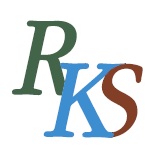9권 3호
초록
Abstract
and compiled because of the enormous volumes (Veritable Recordsof King Taejong, September 4, 1409). Ta-hs?eh yen-Iwas accepted as a text atSeoyeon during the era of King Taejong. It took six years for the Crown Princeto read through Ta-hs?eh yen-Iin October 1413 (Veritable Records of KingTaejong, October 7, 1413). In view of these facts it is known that Ta-hs?eh yen-I148 The Review of Korean Studieswas a very remarkable text at Seoyeon during the era of King Taejong. There arealso records concerning Seoyeon during the era of King Taejong that besides Ta-hs?eh yen-I the Book of Filial Pietyshould be used as a text (Veritable Recordsof King Taejong, June 18, 1402) and that Seoyeongwan selected some contentfromthe Records of the Deeds of Filial Pietywhen making a folding screen(Veritable Records of King Taejong, December 30, 1413).A variety of curriculi for royal education emerged at Seoyeon during the eraof King Sejong. This was due to the fact that Munjong served as the CrownPrince for a long duration0 years (he was appointed as Crown Prince in1421)s well as King Sejong making sure Crown Prince Munjong receivedthorough training from the start. According to the veritable records in 1438, theCrown Prince had already read the Four Books and the Five Classics ofConfucianism including Abridged Essentials of Comprehensive Mirror for Aidin Government (Veritable Records of King Sejong, March 19, 1438). KingSejong also had the Crown Prince learn Chinese pronunciation throughJikhaesohak and Chunguijigeon.Besides, another remarkable text at Seoyeon during the era of King Sejongwas Sayak yojip (Veritable Records of King Sejong, October 5, 1446). KingSejong ordered the Hall of Worthies to compile all the royal orders and edictsfrom the Qin dynasty through the Han dynasty to the Ming dynasty. KingSejong also ordered Jeong In-ji, Academician of the Office of Royal Decrees to

